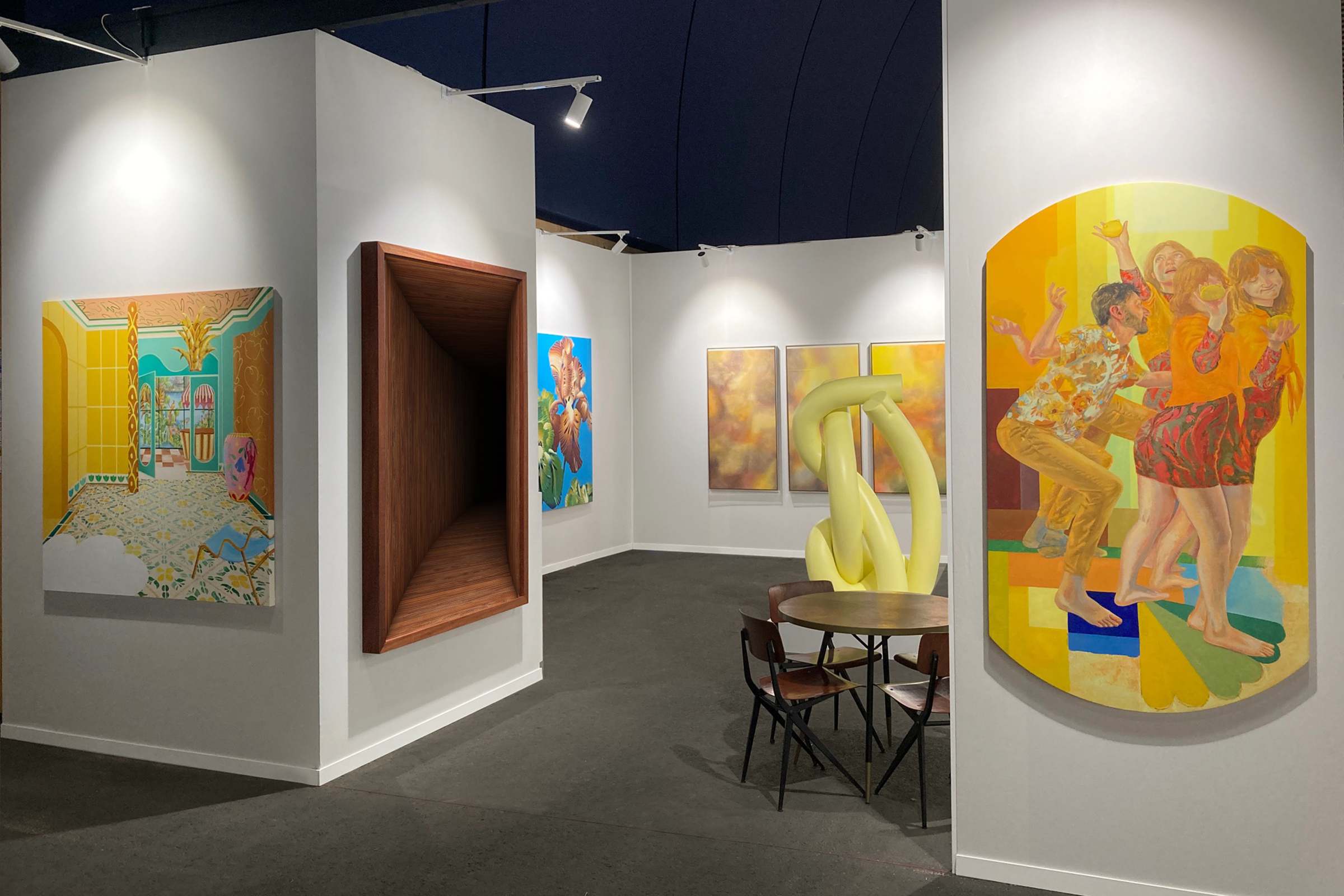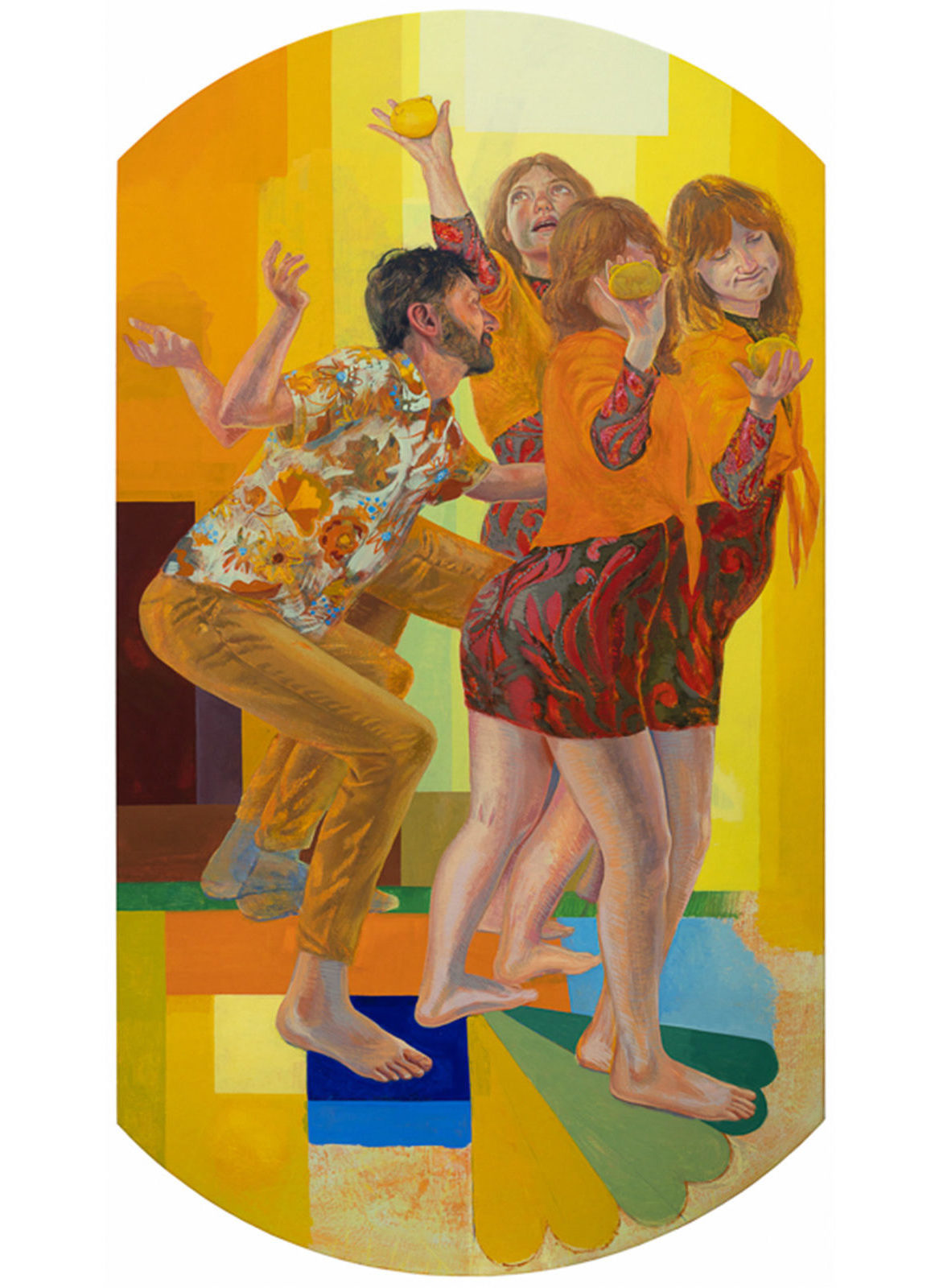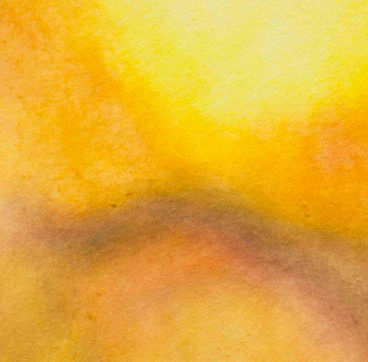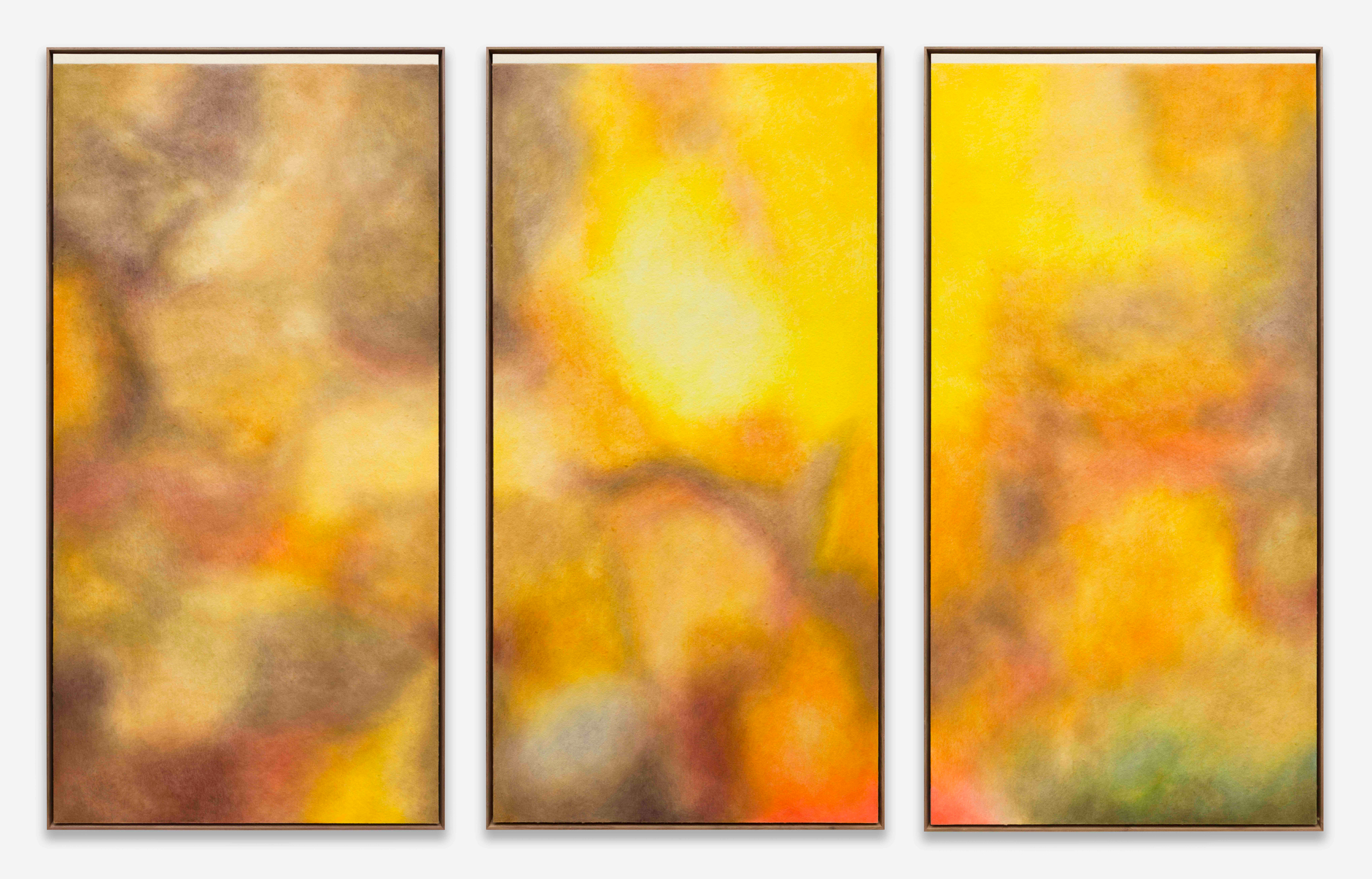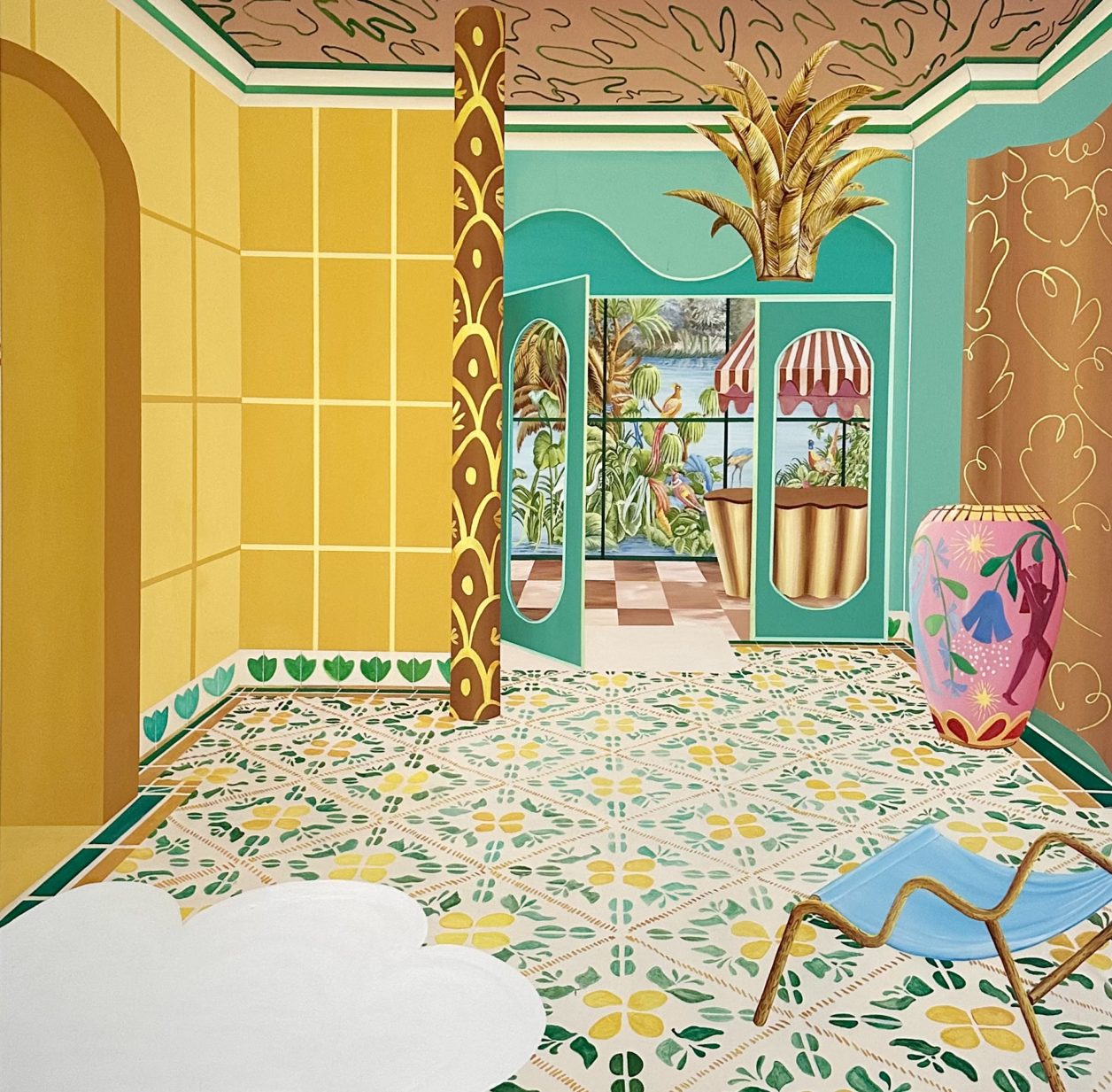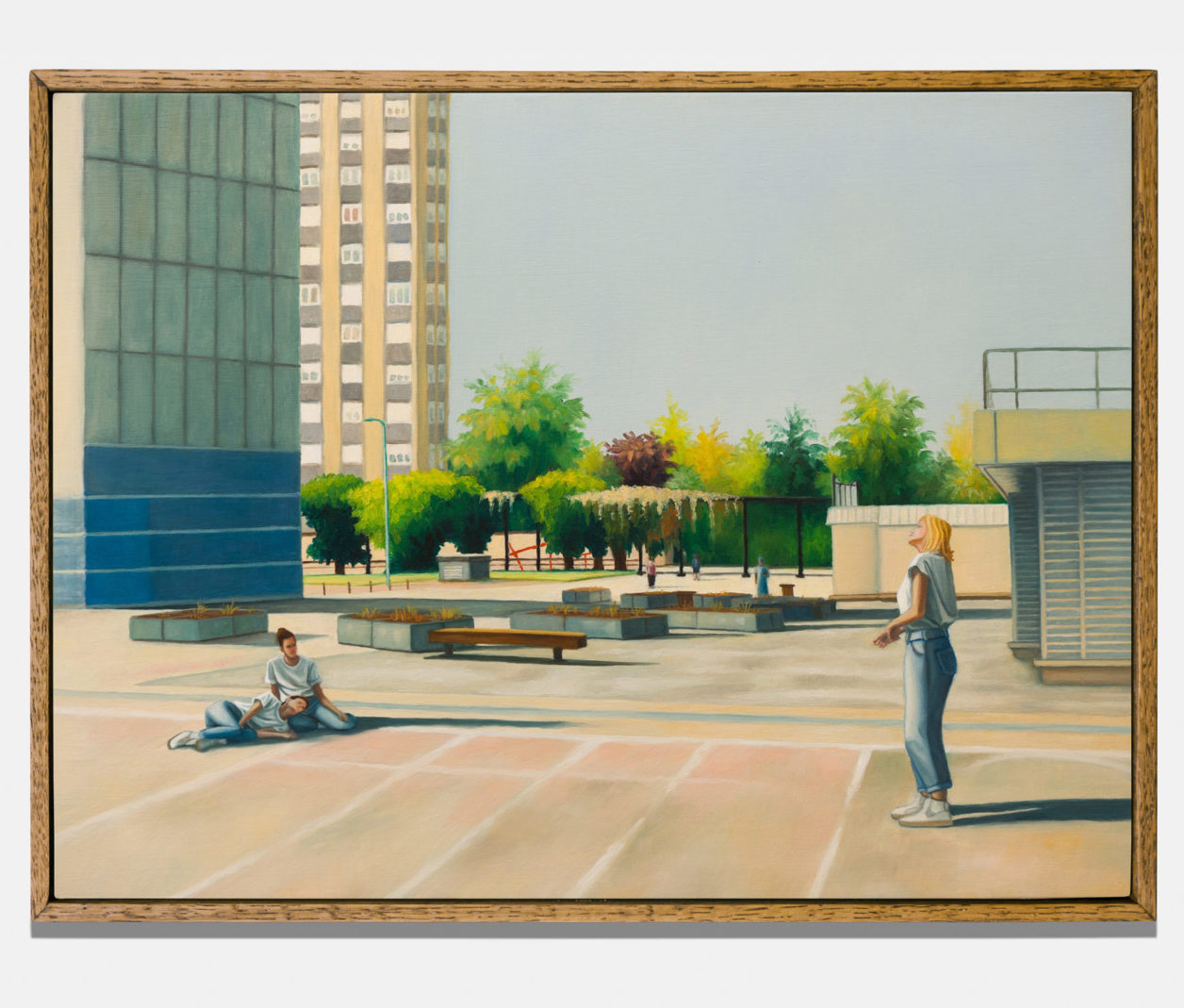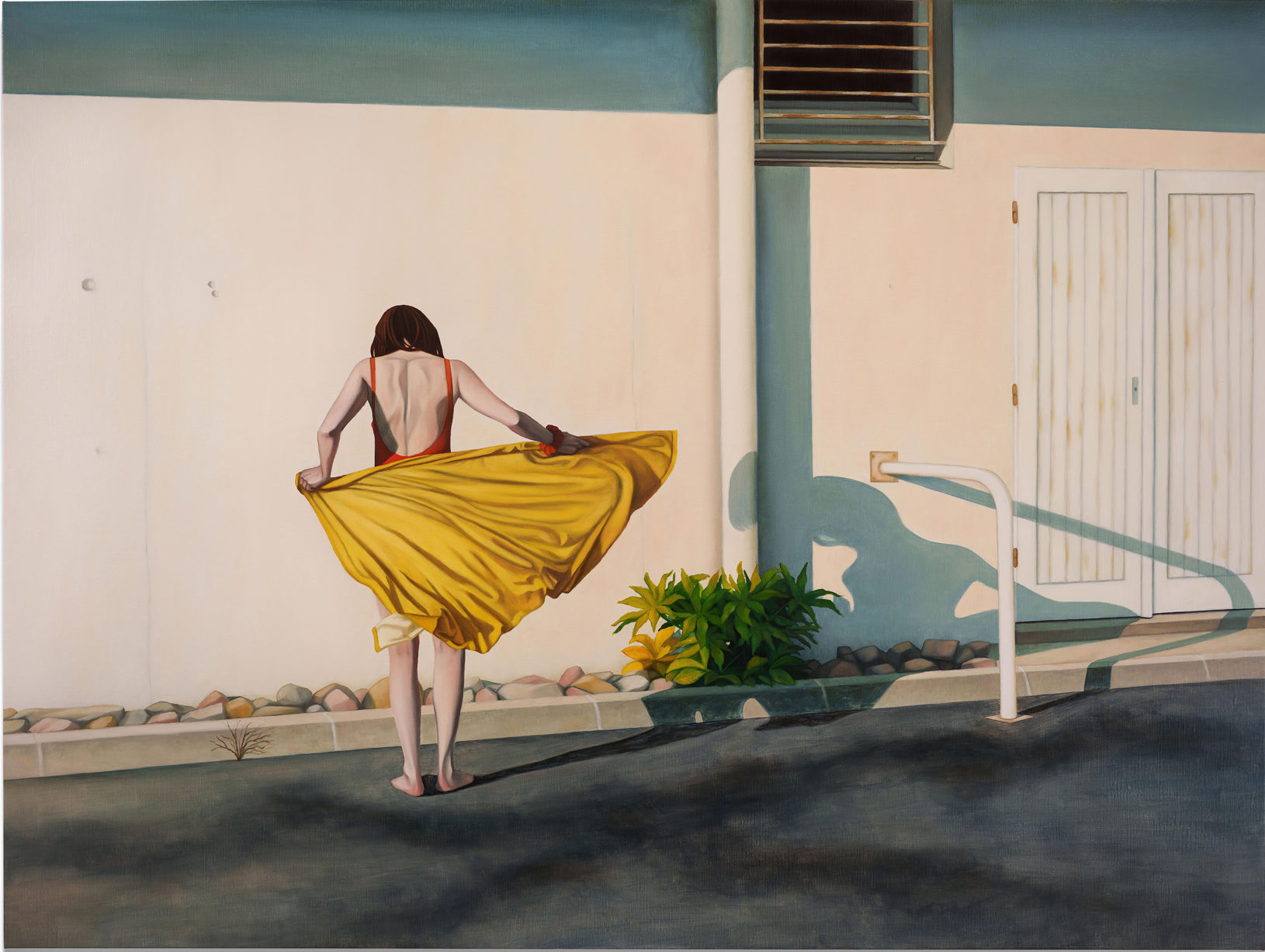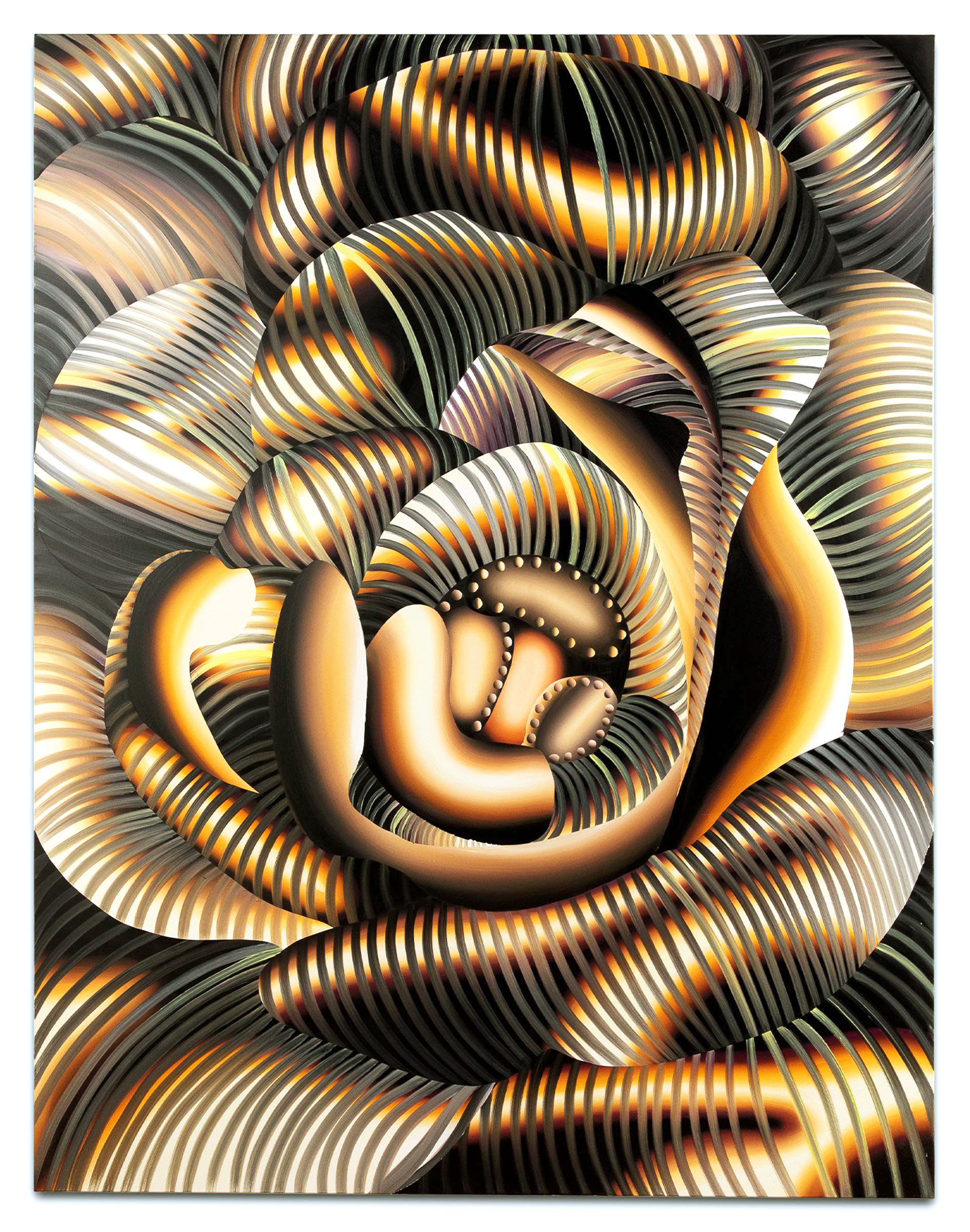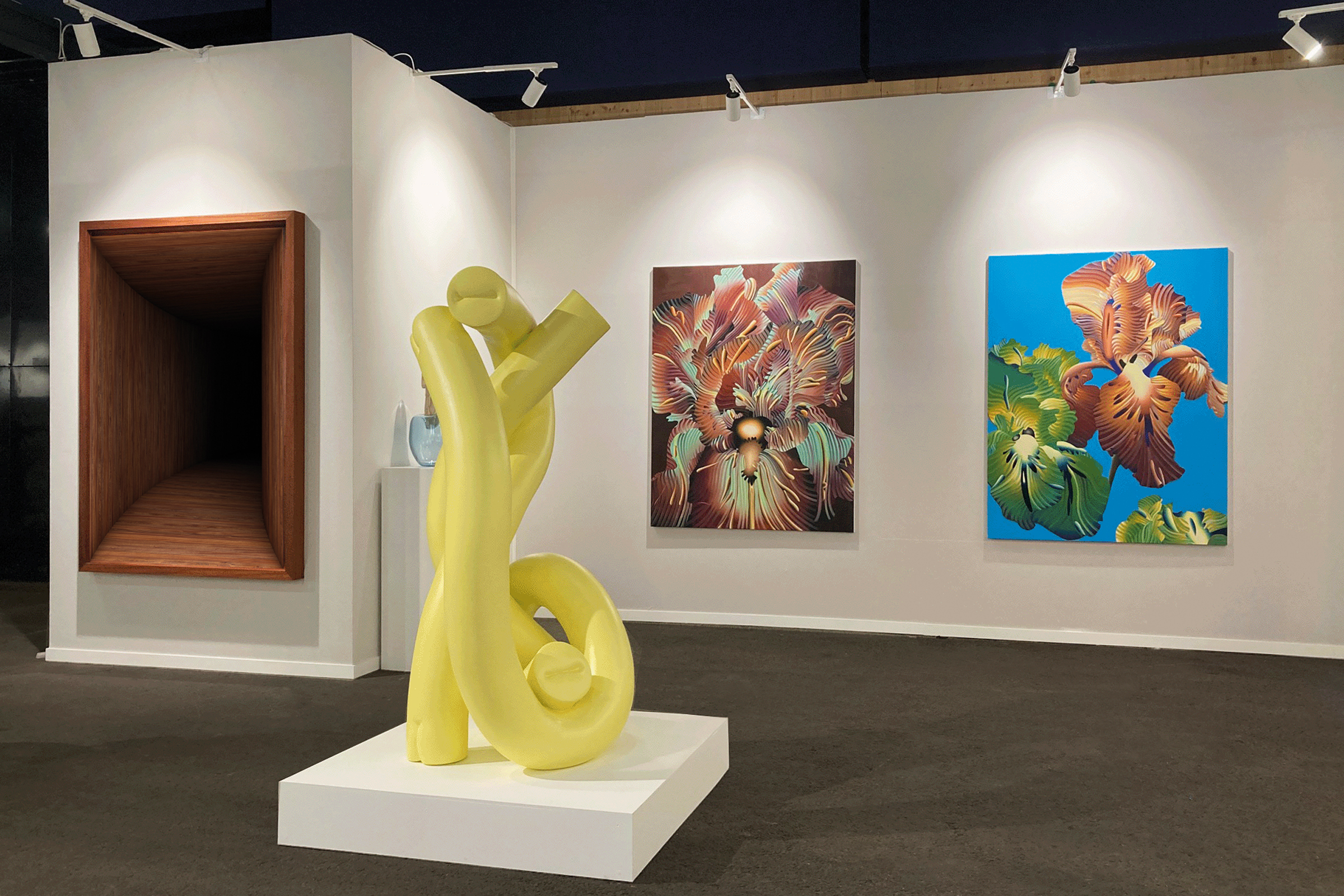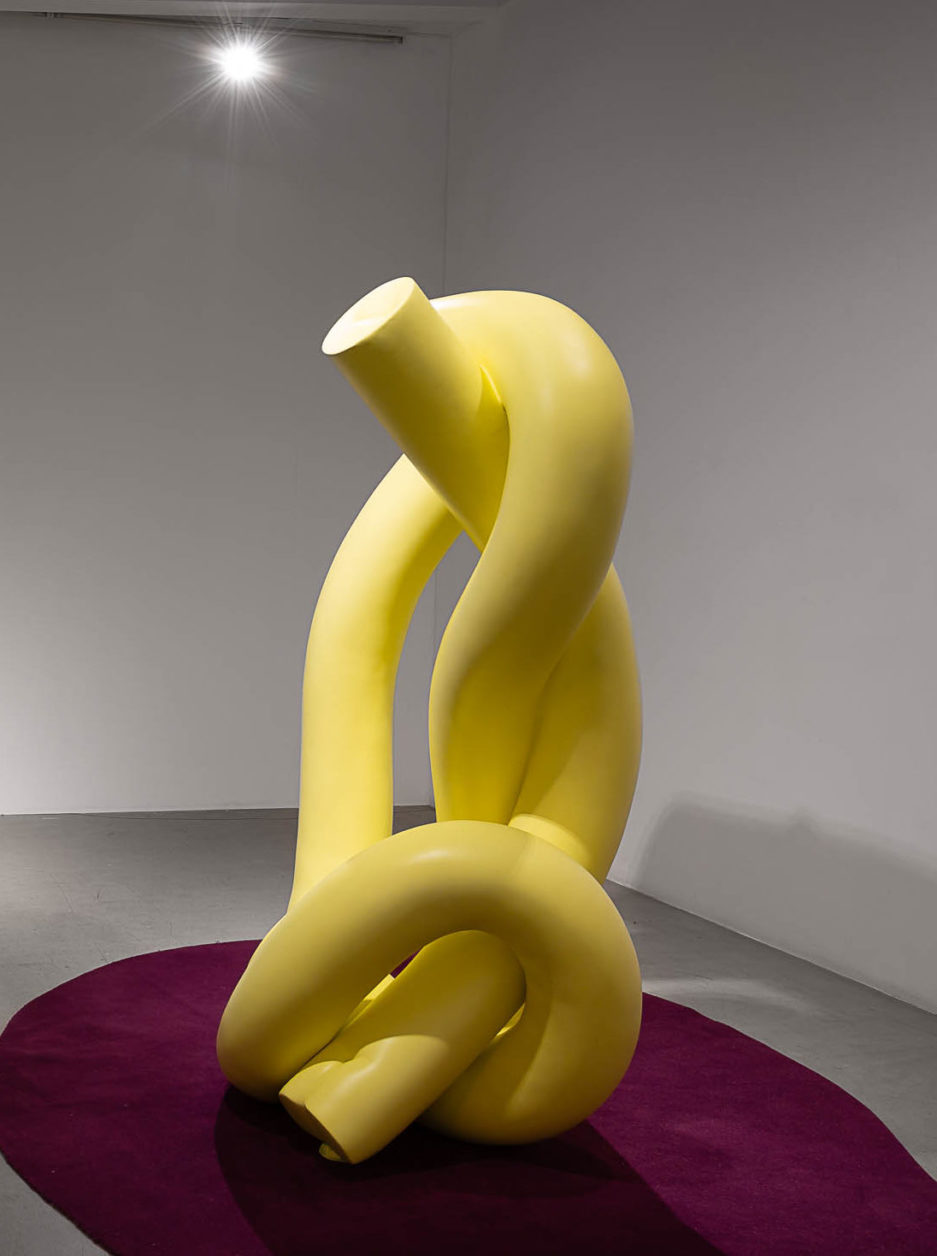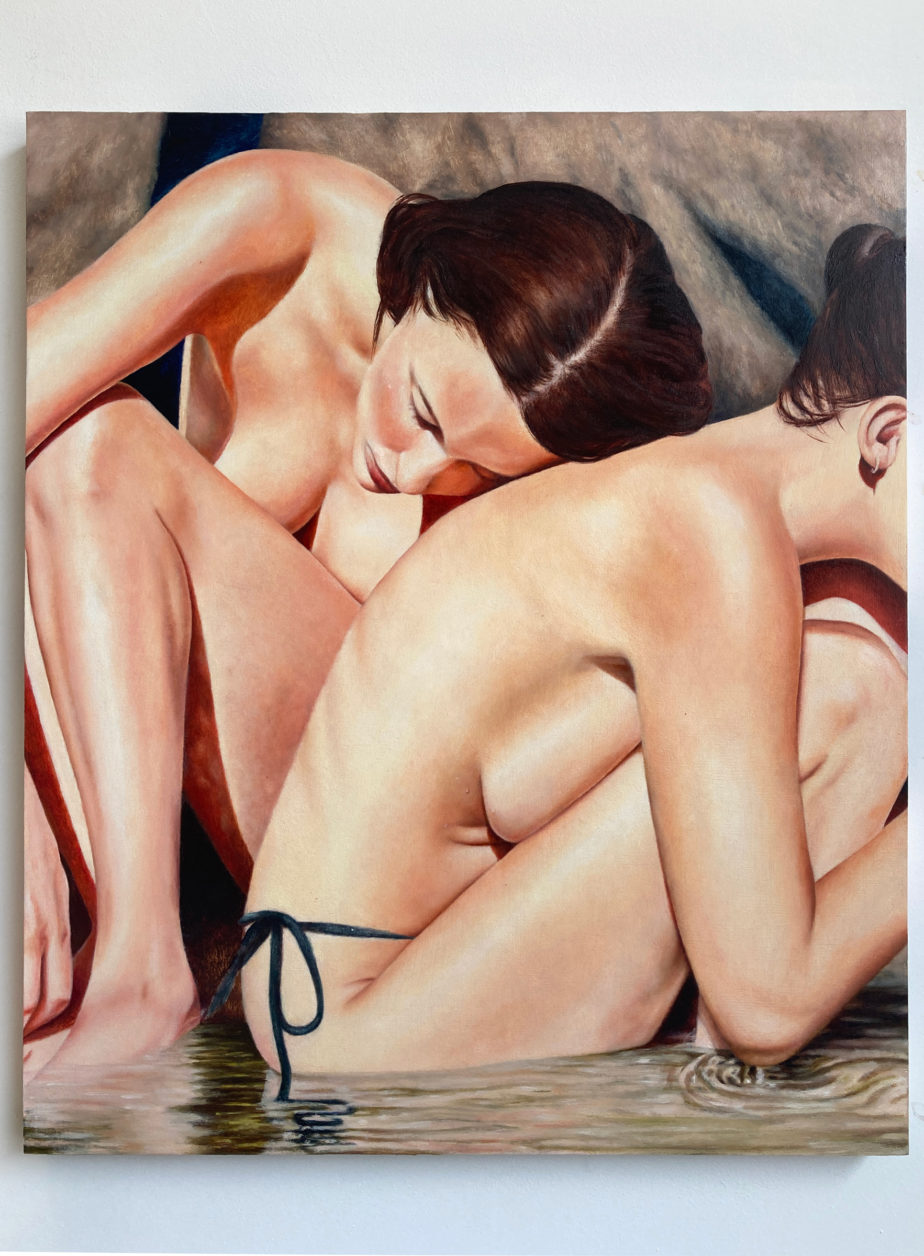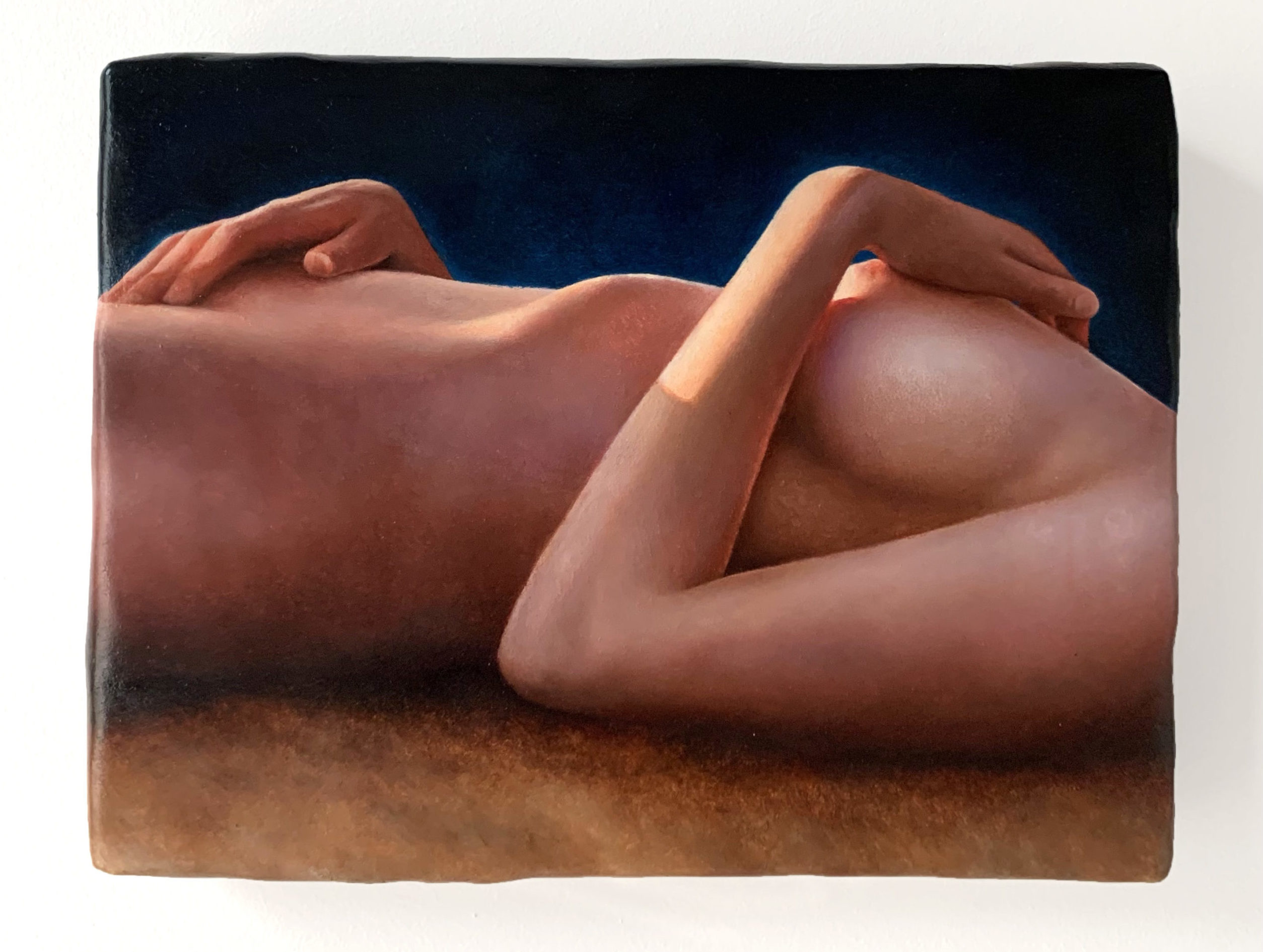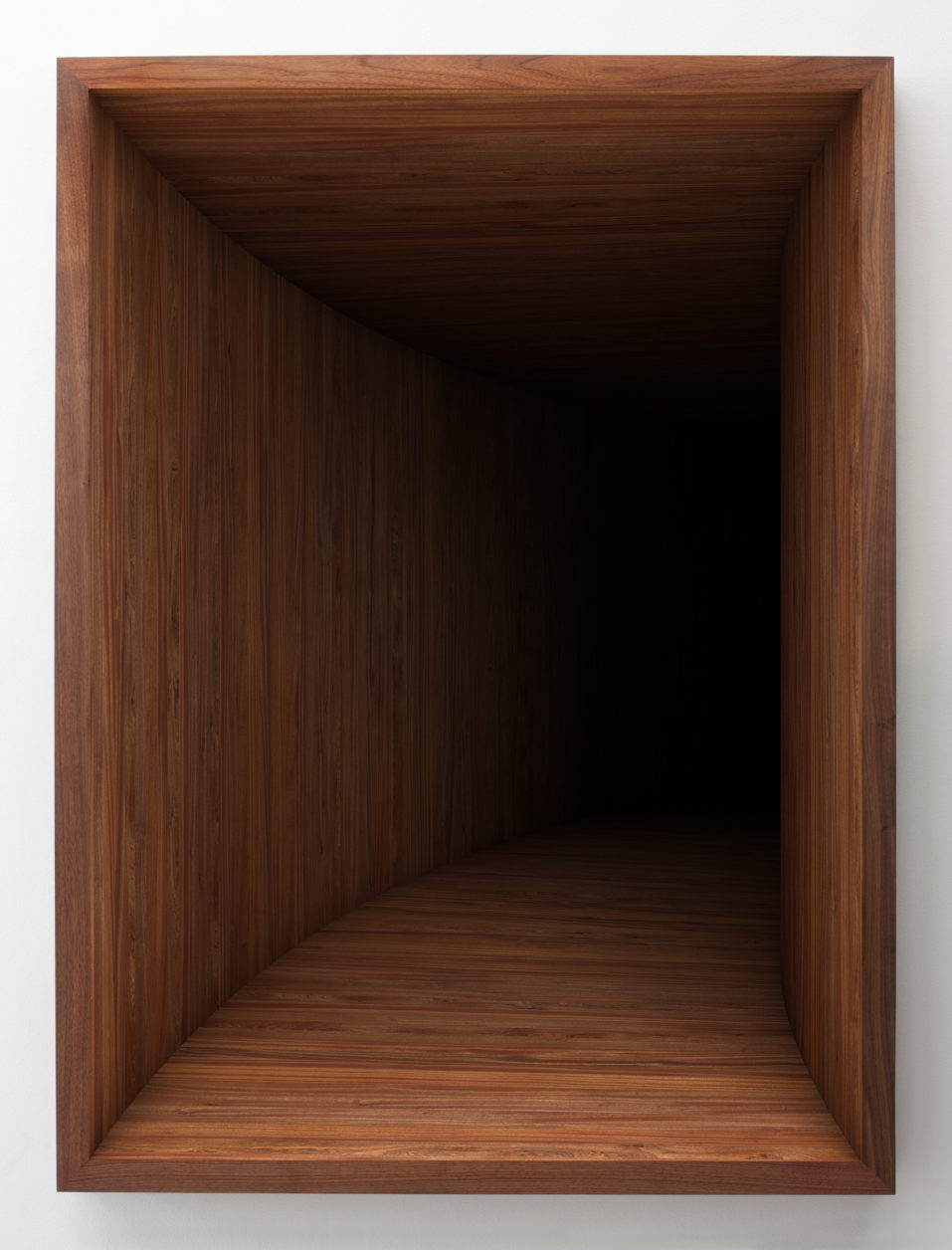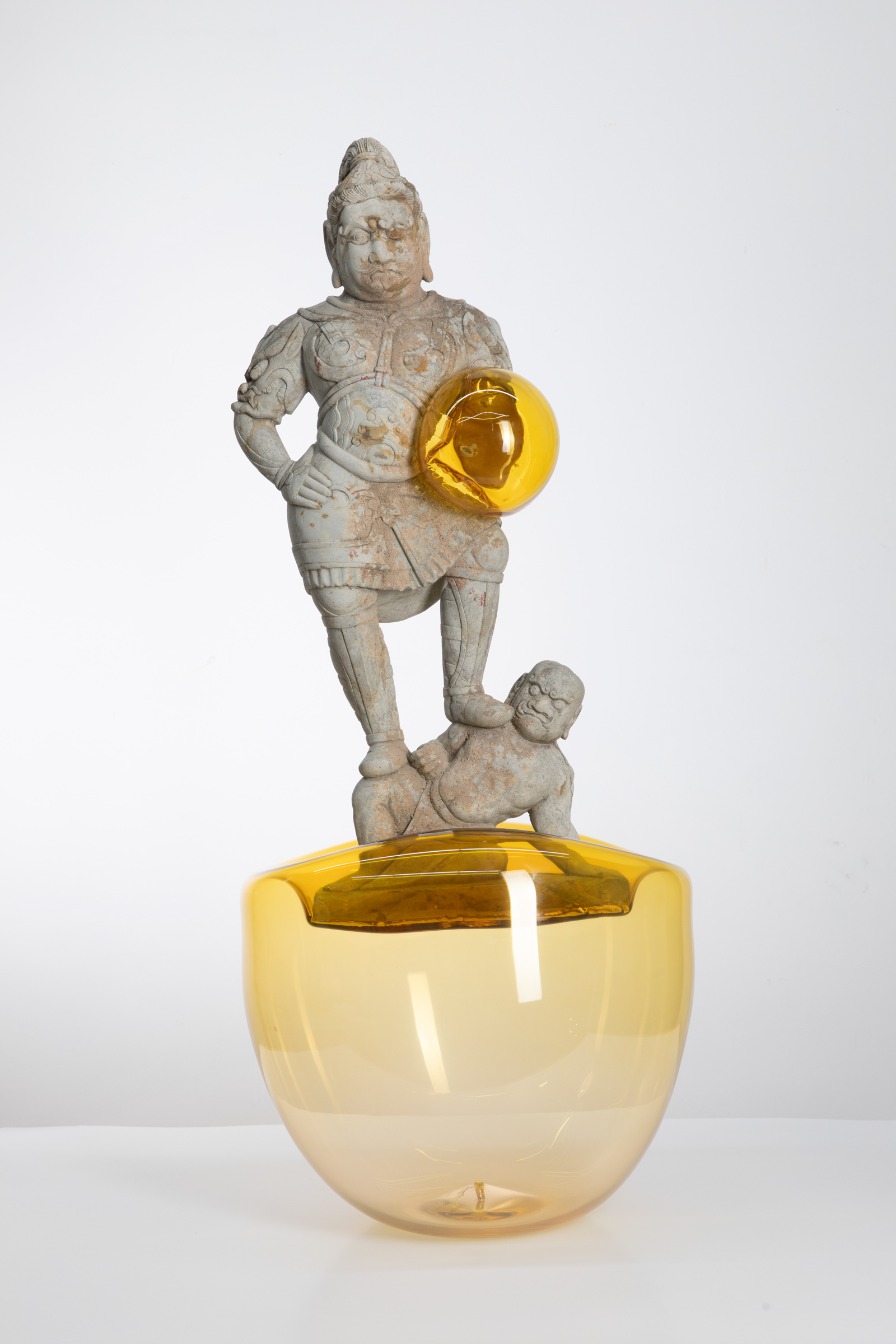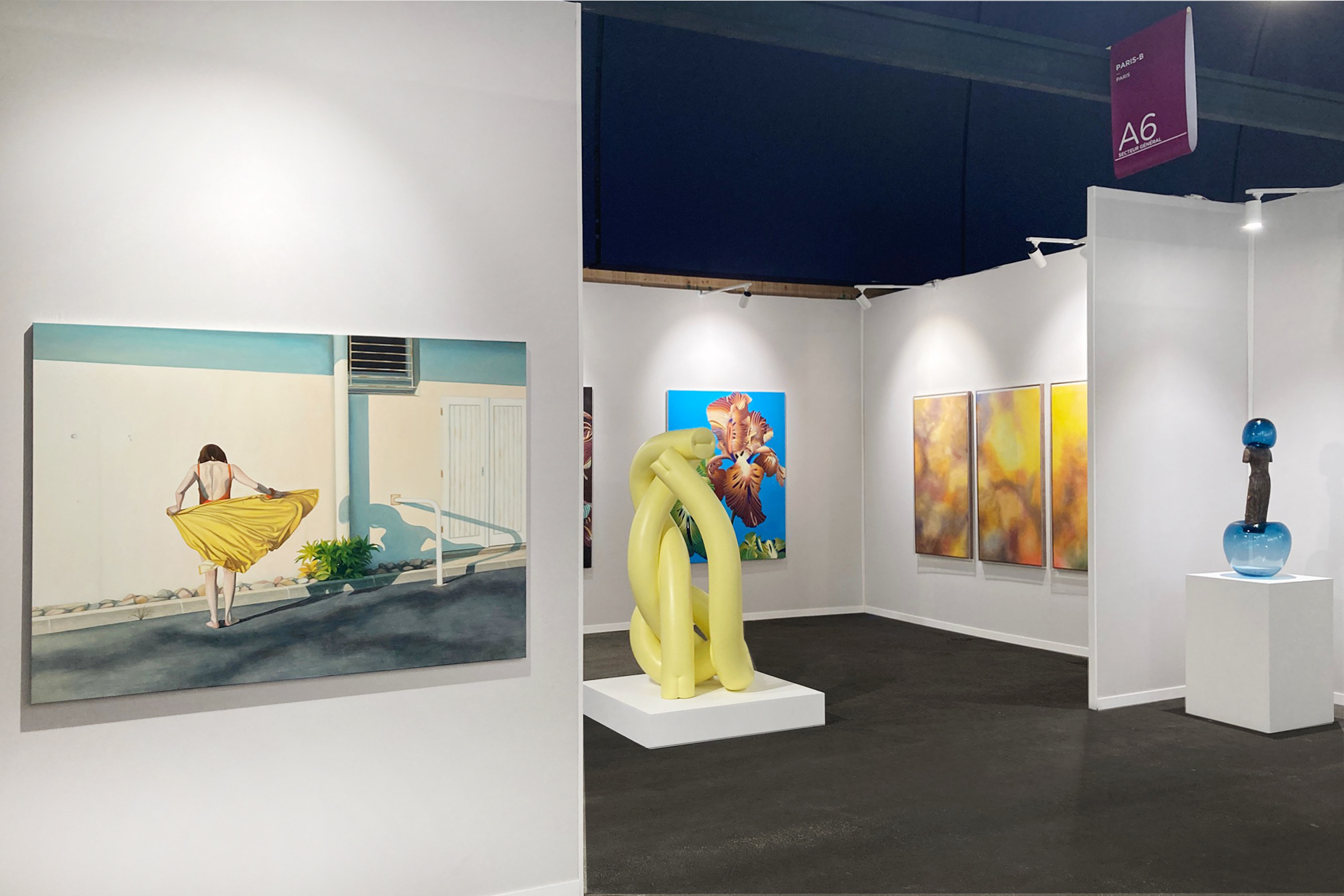ART PARIS 2024
Marion Bataillard, Léa Belooussovitch, Marion Charlet,
Dorian Cohen, Laura Garcia Karras, Bence Magyarlaki, Marguerite Piard, Dune Varela, Theis Wendt, Qi Zhuo
APRIL 4th - APRIL 7th, 2024
GRAND PALAIS EPHEMERE, PARIS, FRANCE
Booth No. A6
Marion Bataillard is one of those painters who relaunch the methodological challenge of the classical painting, by prioritizing the carnal, and thus cognitive, relationship to the support, to the format, to the space, to the bodies. She builds in and towards the living. Something physiological radiates.
Transfigured urbanity, expressive bodies, vibrant colors, the concrete framework of large cut-out panels… From the outset, their geometrics form a frame, serving as a counterpoint to the movements and expressions of the utterly human figures she shows. Because nature doesn’t make straight lines, the rectilinear brought in by man both balances and constrains the irreducible meandering of the body. This is precisely what the deployment of spaces seems to emphasize: our bodies, affected in different ways. Marion Bataillard’s characters are intriguingly polysemous.
Starting with a particularly violent image – or, perhaps we should say an image corresponding to the everyday violence to which we have become accustomed – found in the media and derived from current events, Léa Belooussovitch makes a copy, a double, an alternative. She subjects this image to a series of transformations that decontruct the image definitively. […] From the clear and speckled original image the resulting work becomes downy, velvety, almost powdery, forming clouds of color that melt into one another, to such a point that without knowing the origin, we would think that we are looking at a purely abstract image. […] She captures, but she also captivates. — Gaël Charbau
In Charlet’s work, it’s the colors that determine the layout of each of her paintings and watercolors, and therefore complete the pattern. The right dosage of their intensity, the quality of their transparency and opacity give the painting depth, rhythm and breathing as the artist plays with emptiness and fulness, refraction and screen. Something seductive is at play in her work which lures the viewer as into a trap that once discovered cannot be escaped. According to the words of the poet, luxury, calmness and delight reign over her work and create resting places out of the views of the open sea, of the greenhouse-looking cottage, of this floating boat. The light shines everywhere, blissfully, in a silent pause. One feels at peace with no intention to leave. — Philippe Piguet
With his incredibly detailed figurative painting, Dorian Cohen reveals the beauty and strangeness of the great anonymous and artificial urban spaces that surround us. Halfway between a Caravaggio touch, in which collide an unbridled baroque nature and an antique ideal of perfection, and an admiration for Poussin’s rigor in his precise touch and the gran- diloquence of his compositions, Cohen’s landscapes, with their extreme formats (either very small or very large), confront examples of motorway infrastructure with unusual architectures and an abundant, troubling and even hostile nature, in an almost surrealist and strange interplay. — Anne-Sarah Benichou
Surrounded by her tended plants and a few old botanical plates, protected from the outside world, Laura Garcia Karras reflects, doubts, conceives, studies, doubts again, observes, questions herself… Before it becomes a painting, her work is cosa mentale, an exercise of the mind which, by dint of being sharpened, tends to liberate Laura Garcia Karras from the prison of appearances. […] After a sketch barely traced with the tip of a pencil, the brush comes into action, the act of painting. With it, our gaze follows long strokes, where oil paint reveals the guts of the idea rather than its own consistency. Applied in a single gesture, the oil tolerates no hesitation, and it’s up to the artist to stretch it to reveal its flexibility, offering our view a palette of nuances. Among linear gradients and steep slopes, we try to imagine the pressure and caress of the brush, the thickness and fluidity of the material, the precision and vivacity of a perfectly skillful gesture. We can only imagine it as the workmanship does not betray the passage of the tool. — Anne-Laure Peressin
The body and architecture are central to Bence Magyarlaki’s practice. Their works encapsulate the tensions within movement, questioning the patriarchal values reflected in our societal structures and the control on our identity and its desires. Their sculptures are transformative in nature, addressing issues of sexuality, identity, fragility, power and social change. Magyarlaki recovers foam and parts of abandoned furniture, transforming their geometry into new anthropomorphic gestures. The memory of the body is always present, addressing recollections of intimacy, both of one’s own body and those of others. They use the traditional Moroccan plastering technique of Tadelakt (which means to caress). A long and precise process that involves superimposing and polishing successive layers, then smoothing out imperfections until the artist’s hand disappears. A flexible outer shell is thus created, expanding and con-tracting with changes in atmospheric temperature making it feel like a moving, breathing surface. An organic body that is alive. — Carolina Grau
Marguerite Piard’s painting is a matter of temperatures. Her palette stretches at both ends towards deep reds and midnight blues, summoning, beyond a certain symbolism (fire/water; blood/night), the thermodynamic sensations produced by particular phenomena. One feels torsos creased by naps and fingers wrinkling at the touch of water. So, one must seek coolness, wrap oneself in her body like a towel after a bath; or melt like sugar, the skin syrupy with sunlight. […] This tension is also facilitated by the specific technique used: Marguerite Piard does not wait for the paint to dry to apply a second layer that will pull the first. The result is marbled and sometimes granulated texture effects, like a dried plain trembling with pleasure at the arrival of rain. This painting, visually close to encaustic, further encloses the body upon itself; it encases it like a liquid that two palms attempt to contain. — Elora Weill-Engerer
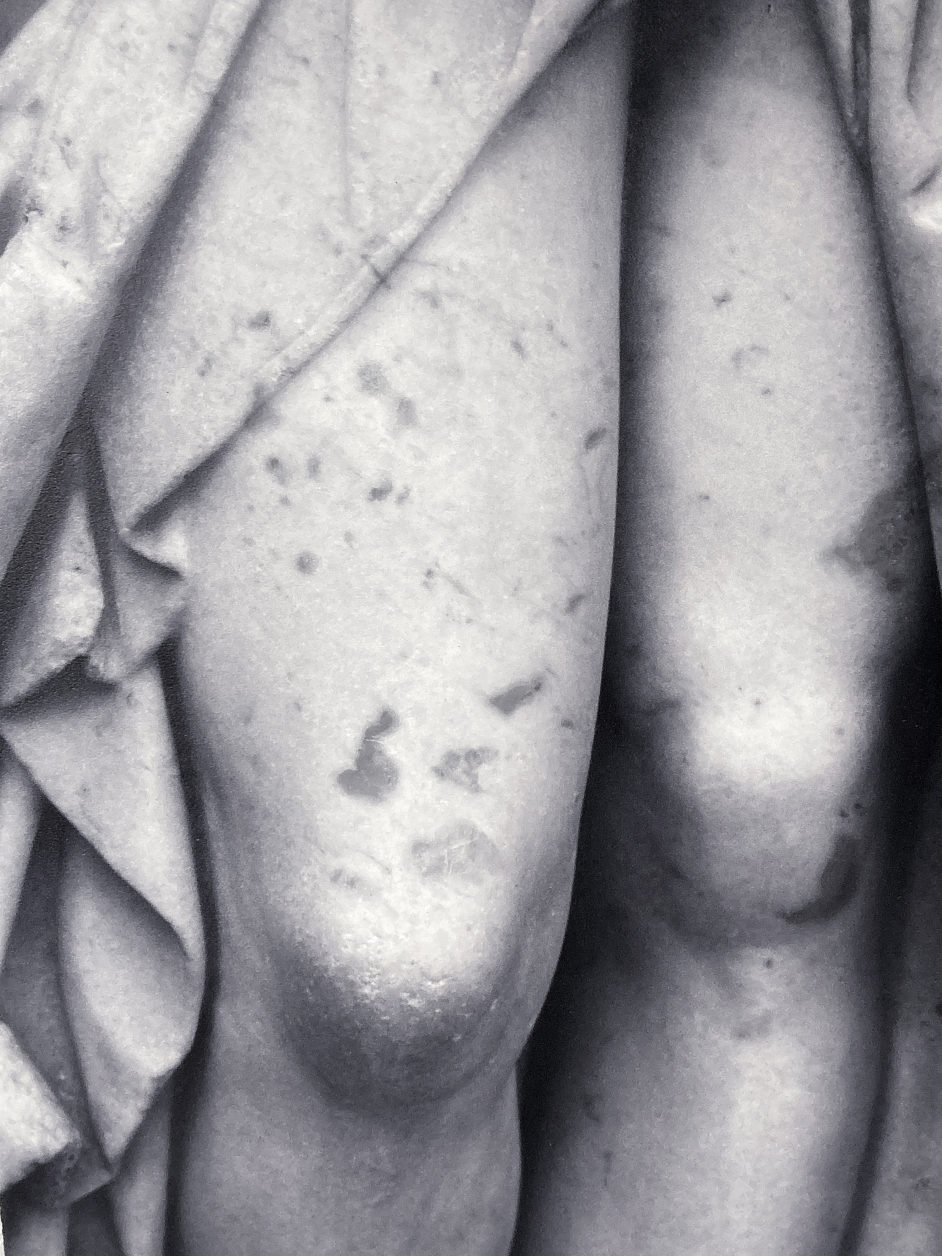
Dune Varela is an artist dedicated to photography in its dual dimension of testimony and alterable material. Playing with the intertwining of times and eras, she works with the image as if it were a ruin, a relic, caught in the movement of speculative archaeology and a history that is as much written as it is erased or fragmented. Moving away from traditional photographic prints on the flat paper surface, Dune Varela prints or mounts them on new materials such as ceramics, aluminum, glass, concrete, and, more recently, marble. The experimentation aims to create a mise en abyme of the representation and image of symbolic, historical, and political landscapes; thus facilitating a dialogue between mediums and sources, memory and history, images and temporalities.
Using a wide range of both organic and synthetic materials, Theis Wendt’s creative process combines sculpture, installation and post-photography. Through digitally rendered photographs he explores the image as space, surface and means of communication. Confronted with a context of creation in the post-truth era, flooded with a constant stream of information, images generated by artificial intelligence and Deepfake technology, Wendt plays with the notions of truthfulness and authenticity. As Walter Benjamin had already predicted in his 1935 essay The work of art in the age of mechanical reproduction, digital reproduction processes affect our sensory perception of physical materiality and the aura that images emanate. The illusory nature, recreated by numerical means, becomes a second-degree nature.
Through humor and ceramics, Qi Zhuo confronts traditions and know-how. In his work, porcelain is both the medium and the object of an experimental “cuisine” characterized by the creation of objects involving foreign bodies immerged in incongruous, enigmatic, sometimes hostile, but always amusing environments. The artist “restores” Buddhist statues from China’s Five Dynasties and Ten Kingdoms period (A.D. 907-960) in glass bubbles. From which we perceive the temporal notion of “slowness”, an eternal splice while maintaining a geographical fluidity. Such style of damaged Buddhist heads, evident in Buddhism’s many rounds of rising and falling, represents the violent movements of religious icons in the East. Eventually, they established a distinct image out of the chaos and confusion. Over the years, such images became detached from its own aesthetic origins and followed Qi like ghosts. They enter the global language and became a metaphor of his “irreverent” as evidence of time and space.
